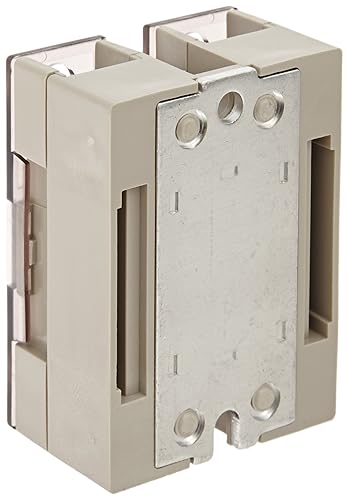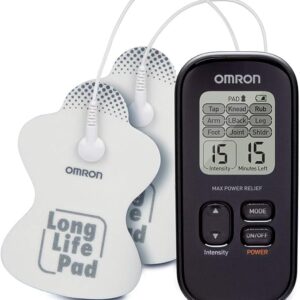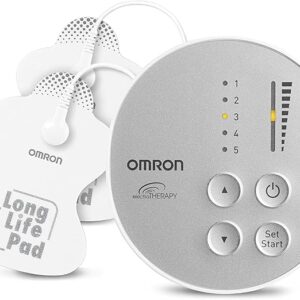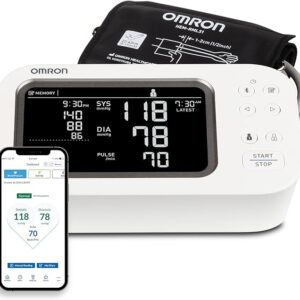Description
Here’s a detailed Pros and Cons Q&A for the Omron G3NA-220B-UTU Solid State Relay:
🔧 Product Overview:
- Model: Omron G3NA-220B-UTU
- Type: Solid State Relay (SSR)
- Load Voltage: 24–240 VAC
- Load Current: 20 A (AC)
- Input Control Voltage: 5–24 VDC
- Control Method: Zero-crossing switching
- Isolation: Phototriac coupler (optical isolation)
- Indicator: Yellow LED (shows input status)
- Mounting: Panel mount with heatsink (recommended)
- Certifications: VDE Certified (German safety standard)
✅ Pros:
- Long Life & High Reliability (No Mechanical Contacts)
- No moving parts = no wear. Ideal for high-frequency switching and long-term reliability, especially in industrial automation.
- Zero-Cross Function = Reduced Electrical Noise
- Switching occurs when the AC load voltage crosses zero, minimizing inrush currents and EMI, which protects other components in the circuit.
- Wide Input Voltage Range (5–24 VDC)
- Flexible control using standard DC logic signals from PLCs, microcontrollers, or manual switches—no extra interface needed.
- High Current Capacity (20 A)
- Handles moderate-to-high AC loads, such as heaters, motors, solenoids, or lights, within its rated current and voltage range.
- Clear LED Status Indicator
- A yellow LED indicates when the input control signal is active—makes diagnostics and installation verification simple.
- Phototriac Isolation = Excellent Input/Output Separation
- Ensures high dielectric strength and electrical safety, ideal in industrial or noisy environments.
- Silent Operation
- Unlike electromechanical relays, SSRs are completely silent, making them ideal for environments where noise is undesirable.
- Certified for Safety (VDE)
- Meets strict German electrical safety standards, useful in regulated industries like medical, food, and EU manufacturing.
❌ Cons:
- Requires Heatsink for Full Load Operation
- At 20 A, external heatsinking is essential to prevent overheating—failure to do so will reduce life or cause failure.
- No Built-in Overload or Short Circuit Protection
- SSRs are less tolerant of overcurrent compared to mechanical relays. External fuses or circuit breakers are strongly recommended.
- Higher Cost than Mechanical Relays
- SSRs are more expensive upfront, especially for higher-current models like this one. Not always cost-effective for low-duty applications.
- Leakage Current on Output (Typically a few mA)
- SSRs have a small leakage current even when “off”—may cause issues with very sensitive or low-current loads unless properly managed.
- One-Way Control (AC Output Only)
- Only works with AC loads—not suitable for DC load switching.
- Fixed Output Type (No Form C Switching)
- SSRs like this model are single-pole (SPST-NO) only—no switching between two outputs, which some electromechanical relays offer.
- Sensitive to Surge/Overvoltage Conditions
- Needs transient voltage suppression (TVS) or MOVs for protection if installed in environments with frequent voltage spikes.
❓ Q&A – Practical Use Considerations
Q1: Can this relay control a heater directly from a PLC?
🔹 Yes, if the PLC can supply 5–24 VDC at a few mA. You can use a PLC digital output to turn the SSR on/off and control an AC heater (within 20 A).
Q2: Does it need a heatsink?
🔹 Yes, especially when switching loads above 5–10 A continuously. Omron provides thermal derating charts—at 20 A, a properly sized aluminum heatsink is essential.
Q3: Is this relay bi-directional?
🔹 No—the AC output can handle current in both directions (typical for AC), but it only turns on when triggered by a DC input (5–24 VDC).
Q4: Can it replace a mechanical relay?
🔹 In many cases, yes, especially where silent, fast switching and long life are needed. But it lacks contact flexibility (e.g., no NC contact) and manual override.
Q5: Can it be used without a heatsink for short-duty cycles?
🔹 Possibly, but only for low current (<5–6 A) or intermittent use. Continuous use without a heatsink will quickly overheat the device.
🧩 Ideal Applications:
- Heater control in industrial ovens or extruders
- AC motor switching (within rated specs)
- Lighting automation (industrial or stage lighting)
- Pump control in quiet or harsh environments
- Fan speed or cycle control (with phase angle circuit)
- PLC-controlled switching where mechanical wear is a concern
✅ Summary:
The Omron G3NA-220B-UTU is a rugged, zero-cross solid state relay built for quiet, reliable, and high-frequency AC switching. It’s ideal for controlling resistive loads like heaters or lamps via low-voltage DC signals, with optical isolation and built-in surge suppression via diode coupling.
Just be aware: it requires a heatsink for full-capacity loads, lacks built-in protections, and can’t switch DC loads. For its class, though, it delivers excellent industrial-grade performance.




Reviews
There are no reviews yet.